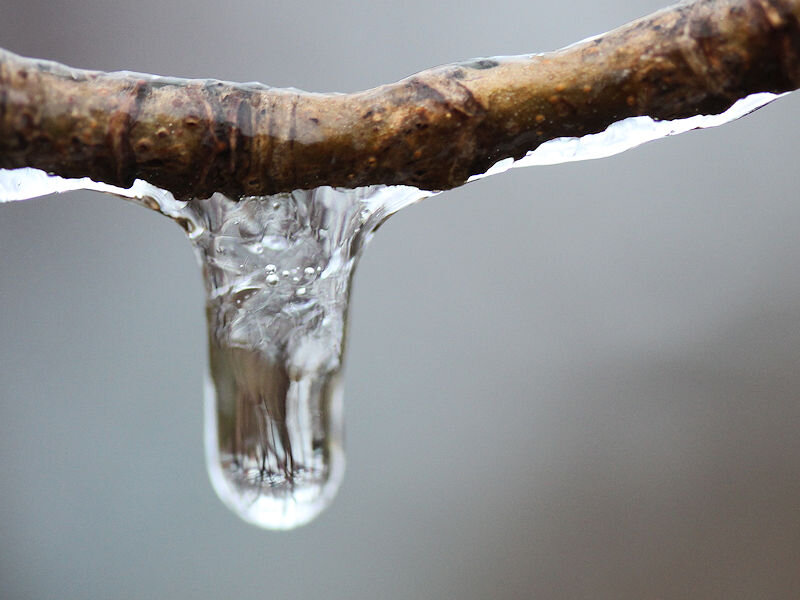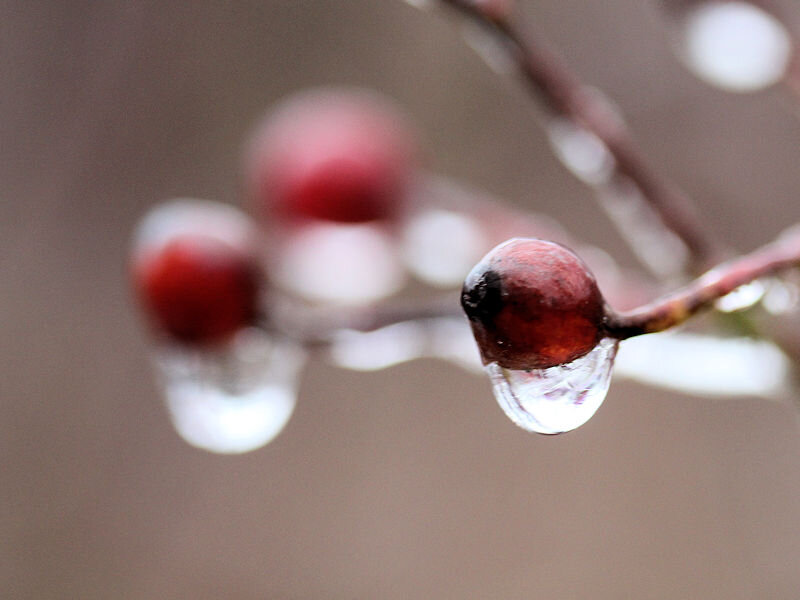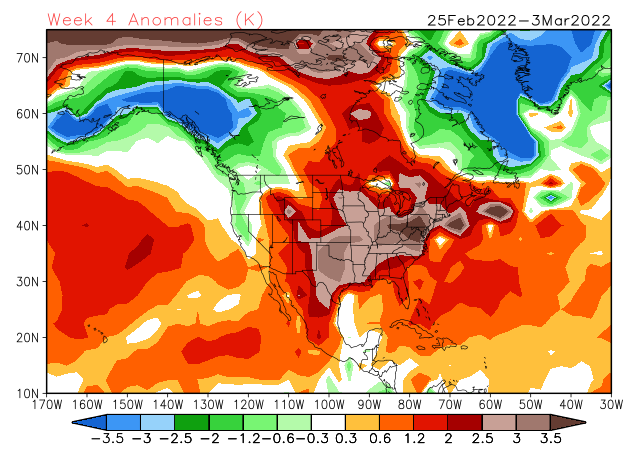-
Posts
22,876 -
Joined
Content Type
Profiles
Blogs
Forums
American Weather
Media Demo
Store
Gallery
Everything posted by donsutherland1
-
Congratulations on the coming grandchild.
-
No torch, just a warmup starting around the 17th-18th. The CFSv2 is very warm during week 4, but that's way out of its skillful range. There is uncertainty, as some guidance shows the Alaska Ridge pattern holding on until around the 20th before an Arctic Low pattern favoring ridging in the East develops.
-
It was also the largest hourly decline during winter. The old mark was 13 degrees.
-
The CFSv2 also shows the pattern change with much above normal temperatures during the closing week of February.
-
JFK: 78 days (12/22/1962-3/9/1963 and 12/29/1968-3/16/1969) LGA: 78 days (12/29/1968-3/16/1969) NYC: 90 days (11/13/1880-2/10/1881)
-
Morning thoughts… Light rain will turn to freezing rain as the temperature plunges this morning. Temperatures will fall from the 50s and 40s into the lower 30s and then 20s in most of the region. Likely daytime high temperatures around the region include: New York City (Central Park): 49° Newark: 55° Philadelphia: 57° A cold weekend lies ahead. Normals: New York City: 30-Year: 40.3°; 15-Year: 40.4° Newark: 30-Year: 40.9°; 15-Year: 41.1° Philadelphia: 30-Year: 42.1°; 15-Year: 42.1°
-
With a temperature of 51 at 11 pm, New York City has reached 50 for the first time since January 2nd when the temperature topped out at 59.
-
On the first issue the guidance seems to be converging in the 17th or 18th, but that’s still 2 weeks away. Big pattern changes have sometimes been preceded by storms. Some individual ensemble members show a storm, but there’s very little agreement among them right now.
-
At 5 pm, it was snowing in Buffalo and Syracuse. Light freezing rain was falling in Binghamton. Rain was falling in Albany. Tonight into tomorrow, colder air will press southward, producing a changeover to freezing rain, sleet, and some snow north and west of New York City and later perhaps into Newark and New Jersey before ending. Northern New Jersey, southeastern New York, Connecticut, and Rhode Island are at the greatest risk of seeing significant icing. A cold but dry weekend will follow. Next week will see temperatures turn milder for a time before more cold air arrives. However, the recent back-and-forth between below and above normal temperatures suggests that a transition is perhaps getting underway. There remain hints on the long range guidance that the second half of February could experience a significant pattern change with both the GEFS and EPS beginning to move into better consensus. Ridging could retrograde to the East with the persistent trough heading westward. That pattern change would lead to a return of sustained above normal readings. There remains uncertainty about the timing and magnitude of such a possible pattern change. The ENSO Region 1+2 anomaly was -0.5°C and the Region 3.4 anomaly was -0.7°C for the week centered around January 26. For the past six weeks, the ENSO Region 1+2 anomaly has averaged -0.85°C and the ENSO Region 3.4 anomaly has averaged -0.92°C. La Niña conditions will likely persist through meteorological winter. The SOI was +16.14 today. The preliminary Arctic Oscillation (AO) was -1.700. On February 1 the MJO was in Phase 4 at an amplitude of 0.399 (RMM). The January 31-adjusted amplitude was 0.500 (RMM).
-
Morning thoughts… It will be cloudy with periods of rain. It will also be mild. High temperatures will likely reach the middle and upper 40s in most of the region. Likely high temperatures around the region include: New York City (Central Park): 48° Newark: 47° Philadelphia: 51° As colder air arrives late tonight, rain could change to freezing rain, sleet, and perhaps a little snow. A cold weekend lies ahead. Normals: New York City: 30-Year: 40.1°; 15-Year: 40.3° Newark: 30-Year: 40.7°; 15-Year: 41.0° Philadelphia: 30-Year: 42.0°; 15-Year: 42.0°
-
It will be interesting to see how things actually unfold.
-
It’s currently in a low amplitude, so its impact is less than would otherwise be the case. One sees ridging starting to develop in the East on the latest EPS after mid-month. The EPS weeklies are even more aggressive. There’s also a temporary stretch of warmer readings during the second week of the month.
-
A significant snowfall will continue to impact the Great Lakes region into tomorrow. The precipitation from that system will spread eastward, with a moderate to significant snowfall likely across upstate New York and central and northern New England. Detroit will likely see its first 10" or above snowfall since February 15-16, 2021 when 10.4" accumulated. In the northern Mid-Atlantic region, mild but wet conditions will prevail tomorrow. Colder air will begin to press southward, producing a changeover to freezing rain, sleet, and some snow. Northern New Jersey, southeastern New York, Connecticut, and Rhode Island are at the greatest risk of seeing significant icing. A cold weekend will follow. There remain hints on the long range guidance that the second half of February could experience a significant pattern change. That pattern change would lead to a return of sustained above normal readings. Much can still change given the timeframe involved. The ENSO Region 1+2 anomaly was -0.5°C and the Region 3.4 anomaly was -0.7°C for the week centered around January 26. For the past six weeks, the ENSO Region 1+2 anomaly has averaged -0.85°C and the ENSO Region 3.4 anomaly has averaged -0.92°C. La Niña conditions will likely persist through meteorological winter. The SOI was +13.26 today. The preliminary Arctic Oscillation (AO) was -1.548. On January 31 the MJO was in Phase 5 at an amplitude of 0.477 (RMM). The January 30-adjusted amplitude was 0.552 (RMM).
-
For reference, Detroit’s daily snowfall record for today is 4.2”. That record was set in 1902.
-
You can find the MJO archive here: http://www.bom.gov.au/climate/mjo/
-
Morning thoughts… It will be partly to mostly cloudy and mild. High temperatures will likely reach the lower to middle 40s in most of the region. Likely high temperatures around the region include: New York City (Central Park): 42° Newark: 41° Philadelphia: 45° A storm will impact the region late tonight through Friday. Cold air will return for the weekend. Normals: New York City: 30-Year: 40.0°; 15-Year: 40.2° Newark: 30-Year: 40.6°; 15-Year: 40.9° Philadelphia: 30-Year: 41.8°; 15-Year: 41.9°
-
A significant snowfall will impact the Great Lakes region late tonight through Thursday. The precipitation from that system will spread eastward, with a moderate to significant snowfall likely across upstate New York and central and northern New England. Detroit will likely see its first 10" or above snowfall since February 15-16, 2021 when 10.4" accumulated. In the northern Mid-Atlantic region, tomorrow will see temperatures rise further. Much of the region will likely see the mercury rise into the lower and perhaps middle 40s. Afterward, the storm that will be producing the snowfall from the Great Lakes to northern New England will bring some rain or rain changing to freezing rain, sleet and snow Thursday into Friday. A cold weekend will follow. There remain hints on the long range guidance that the second half of February could experience a significant pattern change. That pattern change would lead to a return of sustained above normal readings. Much can still change given the timeframe involved. The ENSO Region 1+2 anomaly was -0.5°C and the Region 3.4 anomaly was -0.7°C for the week centered around January 26. For the past six weeks, the ENSO Region 1+2 anomaly has averaged -0.85°C and the ENSO Region 3.4 anomaly has averaged -0.92°C. La Niña conditions will likely persist through meteorological winter. The SOI was +21.66 today. The preliminary Arctic Oscillation (AO) was -0.124. On January 30 the MJO was in Phase 6 at an amplitude of 0.533 (RMM). The January 29-adjusted amplitude was 0.565 (RMM).
-
All three cases with at least as much snowfall as last month occurred in February. 1. 36.6", February 2010 2. 35.7", February 1967 3. 33.2", February 2003
-
Morning thoughts... Today will be partly to mostly sunny but cold. Temperatures will likely reach the lower and middle 30s across much of the region. Likely high temperatures include: New York City (Central Park): 33° Newark: 33° Philadelphia: 38° Milder air will return tomorrow. A significant snowfall will blanket parts of the Great Lakes region, including Detroit. Normals: New York City: 30-Year: 39.9°; 15-Year: 40.1° Newark: 30-Year: 40.5°; 15-Year: 40.8° Philadelphia: 30-Year: 41.7°; 15-Year: 41.8° 30-Day Verification: New York City (Central Park): Average daily forecast: 34.2° Average temperature: 34.9° Average error: 1.7° Newark: Average daily forecast: 35.5° Average temperature: 34.6° Average error: 1.7° Philadelphia: Average daily forecast: 37.1° Average temperature: 37.9° Average error: 2.3°
-
A cold January is concluding. The mean temperature at New York City's Central Park was 30.3°, which was 3.4° below normal. January 2022 was the coldest January since 2015 when the temperature averaged 29.9° and the coldest month since February 2015 (mean: 23.9°). In terms of snowfall, Atlantic City's 33.2" set a new January mark. The old record was 20.3" in 1987). It was also tied with February 2003 for the 4th snowiest month on record. 5 of the 10 snowiest months have occurred since 2000, including 3 of the 4 months with 30" or more snowfall. Records go back to 1945. Islip's 31.8" made 2022 the 2nd snowiest January on record and 3rd snowiest month of all-time. 5 of the 10 snowiest months have occurred since 2000, including all 5 months with 30" or more snowfall. Records go back to 1963. February will likely finish somewhat warmer than normal, but it won't likely join some of the recent years with 40° or above monthly mean temperatures. Generally colder than normal readings will continue through midweek. Afterward, it will turn briefly milder before another cold front pushes across the region. That front could bring some rain or rain changing to snow late in the week. On the north of the frontal boundary, the potential exists for an extended period of freezing rain and sleet. There are some hints on the long range guidance that the second half of February could experience a significant pattern change. That pattern change would lead to a return of sustained above normal readings. Much can still change given the timeframe involved. The ENSO Region 1+2 anomaly was -0.5°C and the Region 3.4 anomaly was -0.7°C for the week centered around January 26. For the past six weeks, the ENSO Region 1+2 anomaly has averaged -0.85°C and the ENSO Region 3.4 anomaly has averaged -0.92°C. La Niña conditions will likely persist through meteorological winter. The SOI was +27.33 today. The preliminary Arctic Oscillation (AO) was -0.065. On January 29 the MJO was in Phase 7 at an amplitude of 0.536 (RMM). The January 28-adjusted amplitude was 0.614 (RMM).









